
USS Indianapolis (CL/CA-35) was a Portland-class heavy cruiser of the United States Navy, named for the city of Indianapolis, Indiana. Launched in 1931, it was the flagship for the commander of Scouting Force 1 for eight years, then flagship for Admiral Raymond Spruance from 1943 to 1945 while he commanded the Fifth Fleet in battles across the Central Pacific during World War II.
Timothy Burstall AM was an English Australian film director, writer and producer, best known for hit Australian movie Alvin Purple (1973) and its sequel Alvin Rides Again (1974).
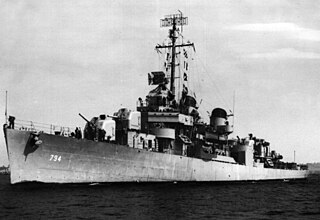
USS Irwin (DD-794), a Fletcher-class destroyer, was a ship of the United States Navy named for Rear Admiral Noble E. Irwin (1869–1937).

The Battle of Timor occurred in Portuguese Timor and Dutch Timor during the Second World War. Japanese forces invaded the island on 19 February 1942 and were resisted by a small, under-equipped force of Allied military personnel—known as Sparrow Force—predominantly from Australia, United Kingdom, and the Dutch East Indies. Following a brief but stout resistance, the Japanese succeeded in forcing the surrender of the bulk of the Allied force after three days of fighting, although several hundred Australian commandos continued to wage an unconventional raiding campaign. They were resupplied by aircraft and vessels, based mostly in Darwin, Australia, about 650 km (400 mi) to the southeast, across the Timor Sea. During the subsequent fighting, the Japanese suffered heavy casualties, but they were eventually able to contain the Australians.

The Cowra Breakout occurred on 5 August 1944, when 1,104 Japanese prisoners of war attempted to escape from a prisoner of war camp near Cowra, in New South Wales, Australia. It was the largest prison escape of World War II, as well as one of the bloodiest. During the escape and ensuing manhunt, four Australian soldiers were killed and 231 Japanese soldiers were killed or committed suicide. The remaining escapees were re-captured and imprisoned.
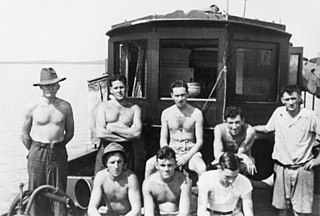
Z Special Unit was a joint Allied special forces unit formed during the Second World War to operate behind Japanese lines in South East Asia. Predominantly Australian, Z Special Unit was a specialist reconnaissance and sabotage unit that included British, Dutch, New Zealand, Timorese and Indonesian members, predominantly operating on Borneo and the islands of the former Dutch East Indies.

USS O'Brien (DD-725), an Allen M. Sumner-class destroyer, was the fourth ship of the United States Navy to be named after Captain Jeremiah O'Brien and his five brothers, Gideon, John, William, Dennis and Joseph, who captured HMS Margaretta on 12 June 1775 during the American Revolution.

Operation Rimau was an attack on Japanese shipping in Singapore Harbour, carried out by an Allied commando unit Z Special Unit, during World War II using Australian built Hoehn military MKIII folboats. It was a follow-up to the successful Operation Jaywick which had taken place in September 1943, and was again led by Lieutenant Colonel Ivan Lyon of the Gordon Highlanders, an infantry regiment of the British Army.

A hell ship is a ship with extremely inhumane living conditions or with a reputation for cruelty among the crew. It now generally refers to the ships used by the Imperial Japanese Navy and Imperial Japanese Army to transport Allied prisoners of war (POWs) and rōmusha out of the Philippines, the Dutch East Indies, Hong Kong and Singapore in World War II. These POWs were taken to the Japanese Islands, Formosa, Manchukuo, Korea, the Moluccas, Sumatra, Burma, or Siam to be used as forced labor.
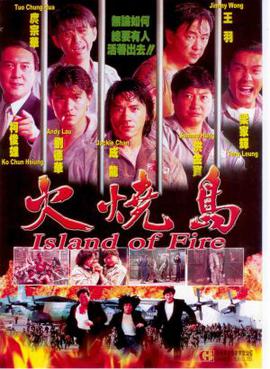
Island of Fire is a 1990 Taiwanese-Hong Kong action film directed by Kevin Chu, and starring Jackie Chan, Andy Lau, Sammo Hung, Tony Leung Ka-fai and Tou Chung-hua. The film was shot in Taiwan and the Philippines in 42 days from 5 April until 17 May 1989. The film's theme song, The Last Gunshot (最後一槍) by Cui Jian, was written as a response to the 1989 Tiananmen Square protests and massacre in Beijing, China.

Raid on Entebbe is a 1977 NBC television film directed by Irvin Kershner. It is based on the Entebbe raid, an Israeli military operation to free hostages at Entebbe Airport in Uganda, on July 4, 1976. The portrayal of Prime Minister Yitzhak Rabin was Peter Finch's final performance; he died five days after the film's release.
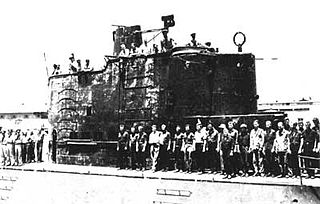
The Raid on Makin Island was an attack by the United States Marine Corps Raiders on Japanese military forces on Makin Island in the Pacific Ocean. The aim was to destroy Imperial Japanese installations, take prisoners, gain intelligence on the Gilbert Islands area, and divert Japanese attention and reinforcements from the Allied landings on Guadalcanal and Tulagi. Only the first of these objectives were achieved, but the raid did boost morale and provide a test for Raider tactics.
SS Rooseboom was a 1,035 ton Dutch steamship owned by KPM (Koninklijke Paketvaart-Maatschappij of the Netherlands East Indies built in 1926 by Rijkee & Co of Rotterdam, the Netherlands.

Garuda Indonesian Airways Flight 206 was a Garuda Indonesia flight that was hijacked on 28 March 1981, by the Komando Jihad in Indonesia. The McDonnell Douglas DC-9 plane PK-GNJ was hijacked on a domestic flight and forced to land at Don Mueang International Airport in Bangkok, Thailand. The hijackers demanded the release of their confederates from Indonesian jails and issued other demands. Three days later, the aircraft was stormed by Indonesian special forces. In the ensuing operation, all five hijackers were killed, while the pilot and one Kopassus operative were mortally wounded. All passengers were rescued.

Warriors of the Rainbow: Seediq Bale is a 2011 Taiwanese historical drama film written and directed by Wei Te-sheng and produced by John Woo, based on the 1930 Musha Incident in central Taiwan.
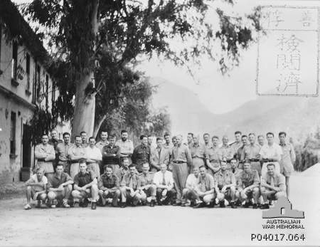
The 1st Independent Company was one of twelve independent or commando companies raised by the Australian Army for service in World War II. Raised in 1941, No. 1 Independent Company served in New Ireland, New Britain and New Guinea in the early stages of the war in the Pacific, taking part in a major commando raid on Salamaua in June 1942. Having lost a large number of men captured by the enemy as well as a number of battle casualties, the company was withdrawn from New Britain later in 1942. The company was subsequently disbanded, with its surviving members being transferred to other commando units, and it was never re-raised.
The Highest Honour is a 1982 Australian/Japanese co-production about Operation Jaywick and Operation Rimau by Z Special Unit during World War II.
The Heroes is a 1989 British/Australian mini-series on Operation Jaywick, a World War II special forces raid on Japanese shipping in Singapore harbour by the Australian Z Special Unit, based on Ronald McKie's 1960 book The Heroes.
Heroes II: the Return is a 1991 British/Australian mini-series about Operation Rimau during World War II. It was a sequel to the 1989 mini-series The Heroes.
Events from the year 2017 in Taiwan, Republic of China. This year is numbered Minguo 106 according to the official Republic of China calendar.













